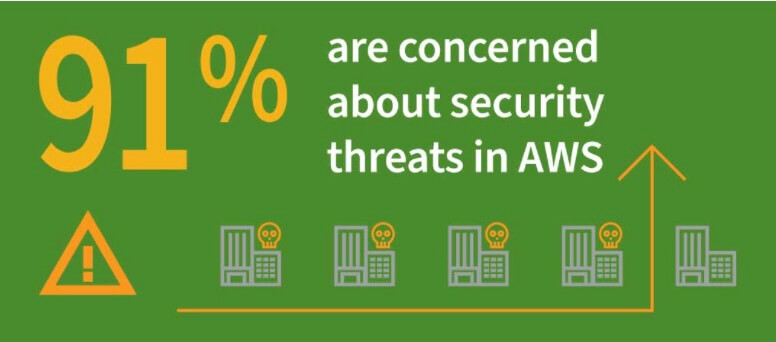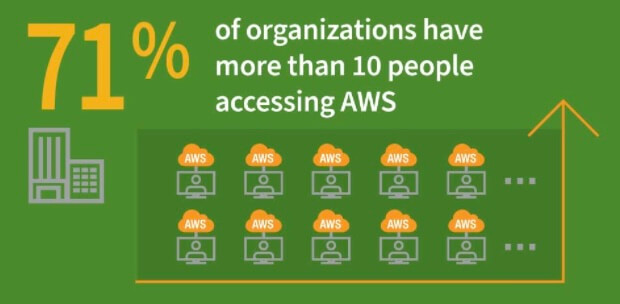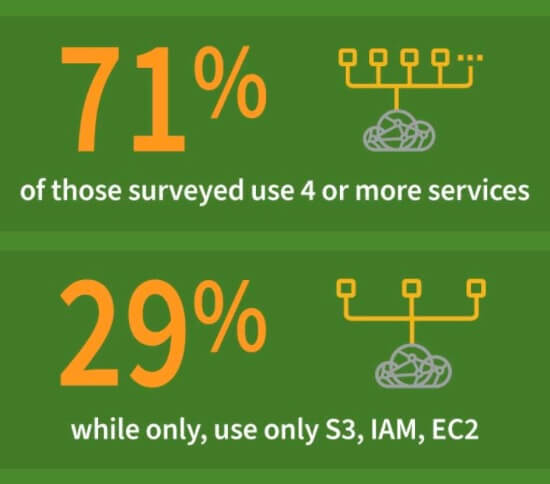It’s pretty easy to understand why so many organizations continue to move services to the cloud when you take a look at the upside. Greater efficiency, flexibility and speed along with cost savings in many cases—it’s no wonder so many businesses continue to embrace the digital transformation and now find themselves ramping up usage of Infrastructure-as-a-Service (IaaS) and Platform-as-a-Service (PaaS) models. So, if the cloud benefits seem endless, is there a downside?
To gather some insight around the subject, particularly around how organizations are securing their IaaS and PaaS environments, we recently surveyed hundreds of security professionals who work to secure Amazon Web Services (AWS) in their roles. Our latest State of Security Report details how organizations are utilizing AWS as well as the IaaS security trends and PaaS security practices that responding companies are experiencing.
For now, let’s take a closer look at 5 of the IaaS and PaaS blind spots that were uncovered:

1. IaaS and PaaS security threats
Cloud platforms are not only popular for companies to build on, but also as a target for attackers as they always seem to find their way towards the masses. 91% of respondents reported being concerned about security threats in AWS, while 41% reported running AWS across three or more regions. This highlights the need for a solution that provides security holistically to see and stop threats across regions as security professionals are looking to automate activities in order to enhance their effectiveness.

2. Risky number of users with access to cloud environments
71% of participating organizations had more than 10 users with access and the ability to modify their entire AWS infrastructure. With more people given more access to the AWS environment, risk exponentially increases. This enhances the challenge of securely configuring the cloud, which is expected to continue for the foreseeable future due to sheer size, scale, and continuous change.
3. Lack of sign-off process
The cloud has expanded so much that securely configuring it with continued confidence is nearly impossible. The survey data shows that almost one-third of organizations that responded don’t have a formal sign-off process before pushing to production, while 64% of organizations are deploying new services weekly or even more frequently. The number of new services being added in combination with more users having access will only increase the risk for an organization.

4. Existing AWS security services provide limited coverage
Organizations are looking for more security coverage than what’s natively available, as over 70% of respondents use more than the bottom three AWS services—S3, EC2 and IAM. This exposes a tremendous security blind spot when you don’t have visibility into all of your cloud services. If a solution isn’t available to monitor a particular service, security teams have no way of knowing if there’s an exploit.
5. Limited visibility across the cloud
The results of the survey clearly demonstrate that companies are investing heavily in security operations; and that security also remains a priority for DevOps personnel who are working to be proactive in their roles. Security analysts want to be empowered to anticipate potential threats or vulnerabilities as well, while DevOps are frustrated by avoidable crises that burn up resources. Utilizing artificial intelligence (AI) would improve visibility across cloud deployments enabling them to see and stop threats, as well as removing blind spots between authorized users and that of a bad actor.
As more organizations continue to adopt cloud, securing it requires a new way of thinking to reduce the risk of services being exploited. There’s a reason Gartner says that through 2025, 99% of all cloud security failures will fall on the customer.
And, if you’d like to see and stop threats against your AWS environment, get a free 30-day trial, today!

